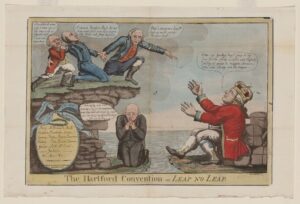Forts Henry and Donelson: U.S. Grant Takes the Stage
On February 4th and 16th, the Confederate forts Henry and Donelson, respectively, surrendered to Union forces under the command of Brigadier General Ulysses S. Grant, marking both clear, important Union victories in early 1862 and the beginning of Grant’s rise to prominence.
Early in the war, Union leaders recognized the importance of controlling rivers throughout the Western Theater, and focused on Confederate installations around the Tennessee River, in western Tennessee. Grant’s forces marched on Fort Henry in conjunction with Union Navy gunboats, which accurately shelled the post, forcing its surrender on February 6. This acted as a domino, providing access by Union forces to Fort Donelson, 12 miles to the east and along the Cumberland River. As Grant’s forces marched on Fort Donelson, Union ironclads destroyed bridges along the rivers, disrupting already-limited Southern rail capacity and general transportation.
The Confederate garrison at Fort Donelson surrendered on February 16th, opening the Cumberland River to the Union, which provided access deep into Tennessee, leading later to the Battle of Shiloh, and enabling Union forces control of essential rivers throughout the Confederate West.
Grant, heretofore an unknown outside of the Army, began his rise to prominence in the eyes of Union Army leaders, political leaders, and eventually the American people. Confederate Brigadier General Simon Bolivar Buckner, an old friend of Grant’s from West Point, initially sought generous terms for surrender, falling back on the tradition of opposing commanders often negotiating an end to hostilities. Grant’s response that “[n]o terms except unconditional and immediate surrender can be accepted. I propose to move immediately upon your works,” was not received happily by Buckner, but the Confederate leader, given his situation, had no option but to accept.
Access a map of the battle sites in context from West Point’s resources collection. Forts Donelson and Henry are circled, just left of center on the map.


